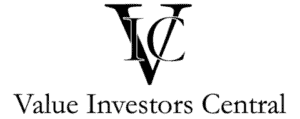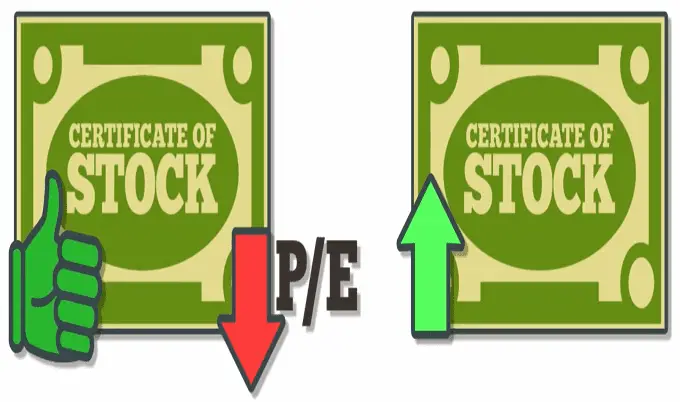The price to earnings ratio (PE ratio) measures a company’s value in relation to how much money it generates in the form of earnings. When calculating whether the purchase of a company’s stock would make a good investment, using the PE ratio can help you understand how expensive or cheap the stock is. Lets’ see what makes a good PE ratio and what it can tell a potential investor.
A PE ratio of below 10 is good for value investing, but the lower the PE ratio, the better. An investor is receiving more value for what they paid with a low PE ratio as the investor is receiving more dollars per dollar invested. Each industry has its own PE ratio that is considered cheap.
What is the Price to Earnings Ratio?
The most famous and commonly used ratio to value a company is the PE ratio. The ratio shows the relationship between a company’s share price and earnings per share. Earnings are revenue minus the cost of sales, selling costs, interest, and taxes, or simply after-tax net income. Earnings per share is just the earnings divided by the share price. The ratio shows the price the market is willing to pay for the company’s earnings and, therefore, what an investor would pay for those earnings if they were to purchase at that price.
For example, if a company’s share price is $100 and its earnings over the last 12 months are $5 per share, the PE ratio would be 20 ($100/$5). The average ratio for the S&P 500 has historically been around 15. Compared to the average, a company with a higher PE ratio generally means investors have a strong sentiment that the company’s earnings will increase significantly in the future. A lower ratio means that typically, investors think the company’s earnings will decline or continue to be meager.
What is a good PE ratio?
There’s no specific PE ratio that is correct because it’s a comparison tool, not a benchmark. By comparing ratios between companies of a similar nature, you can form a clearer picture of a particular company; however, as an oversimplification, the lower the PE ratio, the better. Most value investors look for a ratio of 15 or less, while a ratio below 10 can mean the company is cheap. If you screen for companies with a PE ratio of 15 or less, you would get hundreds of stocks. Even screening for a PE of 10 can return over 100 companies, so the investor must also look at other metrics to filter the list. Metrics can include different ratios such as price to book value of debt to equity. It can be more subjective where the investor only wants to invest in areas with specific knowledge of certain industries.
How does PE ratio differ by industry sector?
Each industry has a range of PE ratio values considered normal for that sector. For example, it is expected that the software industry has a high ratio due to its expected future profitability. In contrast, banks often trade at lower PE ratios due to the associated risk of their increased use of debt. Of course, this is a very rough rule of thumb, and there is no reason why there could be an occasion when a software company may have a lower ratio than a bank. This is due to each company having its own earnings expectations according to its unique situation.
There may also be rare occurrences where the whole market trades at historically low PE ratios, such as the 2008 financial crisis. In this instance, there may be many great businesses at bargain prices available to the investor. The investor’s job is to discover mispricing in the market and decide whether it is the right opportunity to buy.
What affects a company’s PE ratio?
A high PE ratio often means that investors believe a company’s future earnings will be higher than current levels or a higher growth expectation than those selling at a lower ratio. This growth will also need a certain level of sustainability to give investors confidence that the growth will likely happen. A high PE could also mean the company is overvalued. If the company has recently received much favorable publicity, investor sentiment can be overconfident due to emotional biases rather than fundamental value.
A low PE ratio may mean the stock price does not accurately portray a company’s intrinsic value. There could be a situation where the stock price remains constant while the company’s earnings are increasing, which would decrease the ratio. This may be an opportunity to buy the stock with the expectation that the company’s value will rise to reflect its underlying value in the future. This strategy is part of the value investing strategy. However, a company that may have a low ratio does not mean undervalued or a great buy. Its ratio may be low because there could be a good reason for investors to believe the company’s earnings will not increase or even decline. To determine if the sentiment is justified or if the company’s issues are temporary and nothing to be worried about will require further analysis.
Limitations of the PE ratio
The PE ratio should be a very rough estimation as it is not without its flaws. The ratio is a good starting point to quickly value a company and compare the company to other investment opportunities, especially those in the same industry. It is an easy way to as the information that makes the ratio is readily available. However, the ratio should be viewed with a certain level of skepticism. It can be easily manipulated by using different accounting methods to calculate earnings, not in an illegal way, just company preference. Also, the P/E ratio does not include debt which could hurt profits in the long run.
The ratio is also based on past earnings and not future earnings. It is the future earnings of a company that counts; however, it can indicate how profitable a company can be. The PE ratio should be used in conjunction with other valuation metrics and other forms of analysis.


